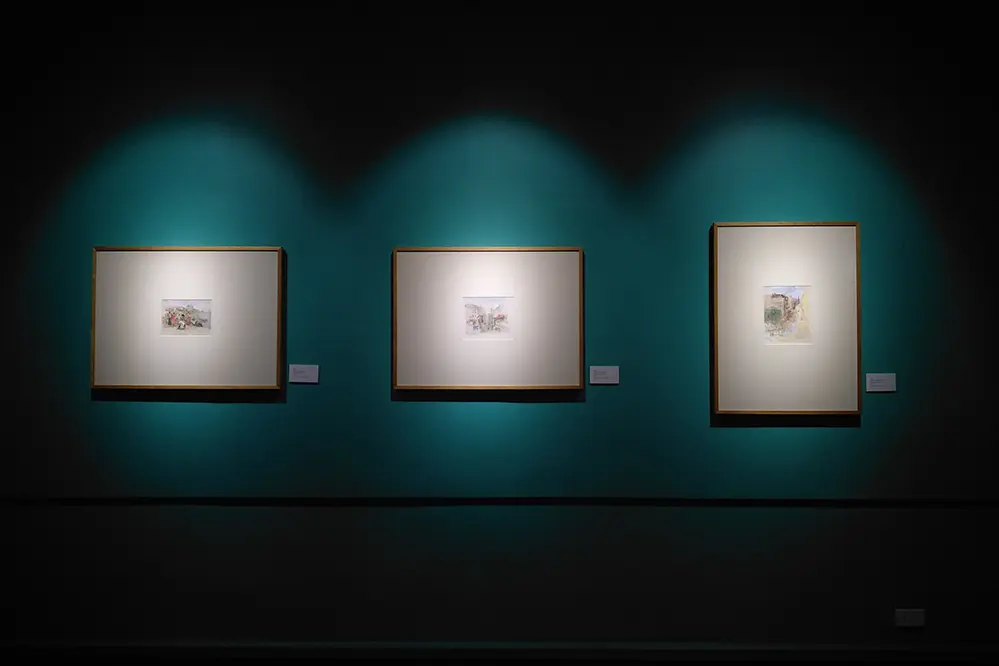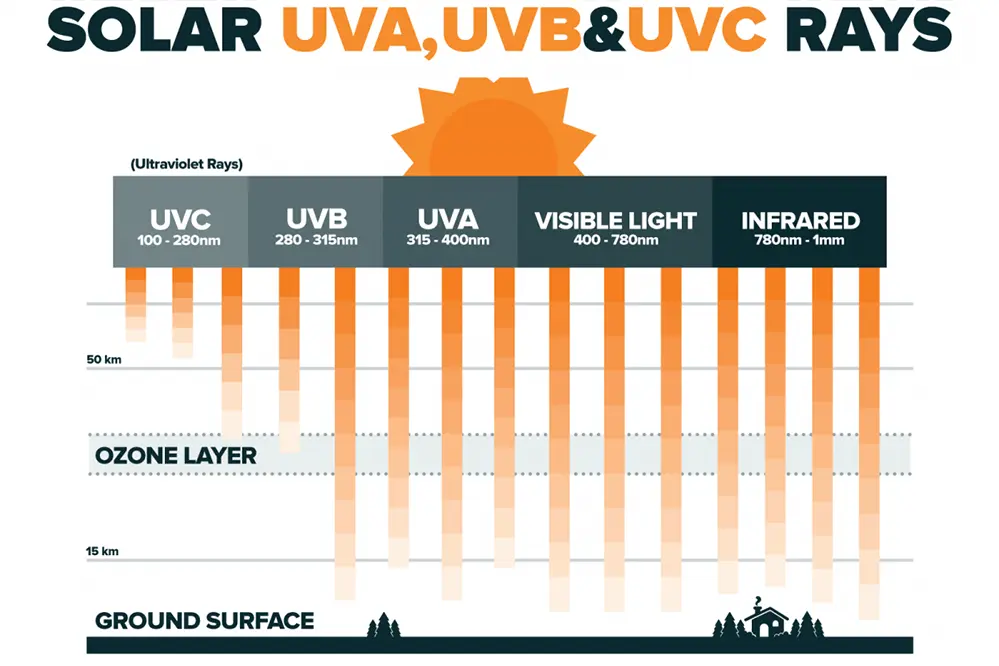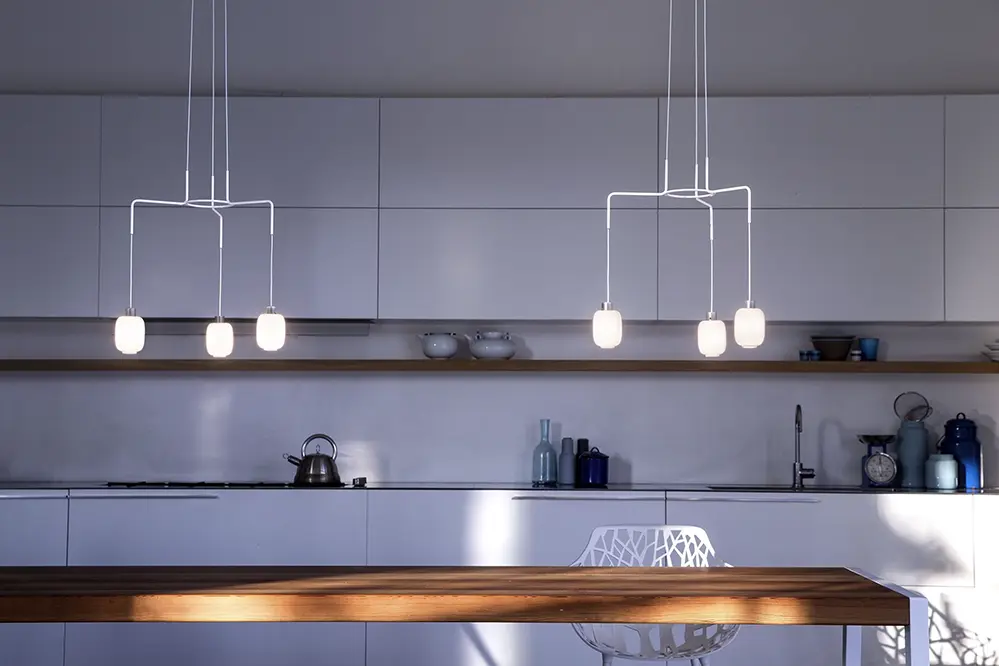LED lights can affect artwork by emitting low levels of UV radiation, which may cause fading over extended periods. However, they are generally safer than traditional lighting options due to their minimal UV emissions.
LED lights can affect artwork by emitting low levels of UV radiation, which may cause fading over extended periods. However, they are generally safer than traditional lighting options due to their minimal UV emissions.
Discover how to effectively use LED lights to illuminate your artwork without compromising its integrity. Explore expert tips and strategies to ensure your treasures remain vibrant for years to come.
Understanding LED Lights and Artwork
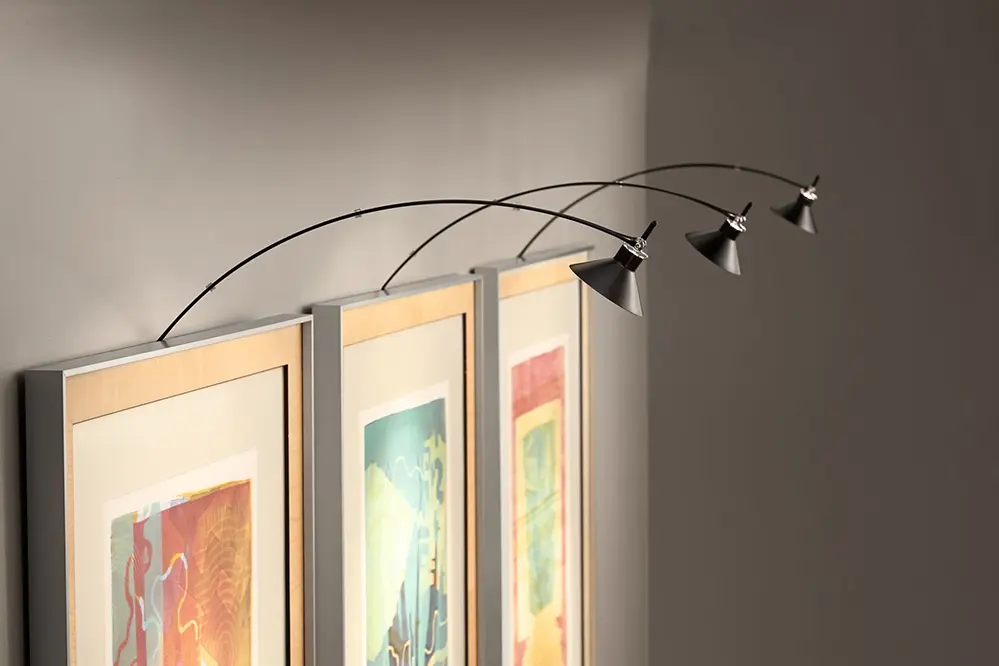
LED lights, with their energy efficiency and long-lasting nature, seem an ideal choice for illuminating art pieces. Yet, their impact on artwork needs thorough evaluation.
Contrary to popular belief, LED lights emit minimal ultraviolet rays.
These rays are notorious for causing damage to artworks, and LEDs seem to hold a promise as a safer option. Their design typically avoids the harmful spectrums, offering peace of mind to discerning collectors, curators, and enthusiasts who value longevity.
However, the nuanced differences in quality and color temperature still warrant scrutiny. It is prudent to opt for LEDs specifically designed for art conservation, ensuring minimal risk to your collection. This careful selection safeguards artistic treasures against subtle shifts, allowing their legacies to endure vibrantly and faithfully over time.
How Light Exposure Affects Art
Light exposure plays a critical role in the preservation of artwork, influencing how colors may evolve or fade over time.
The impact varies based on the light’s intensity and spectrum.
Natural light can be particularly damaging, with ultraviolet radiation from sunlight posing a significant risk. Since these rays are known to break down pigments, they can cause a spectrum of degradation effects, ranging from slight color changes to complete fading of certain hues.
To protect your cherished art collections, it is essential to manage their exposure to light, especially if displayed in areas prone to intense sunlight or continuous artificial illumination. Regular assessments and the strategic placement of art pieces can mitigate potential damage. Moreover, incorporating advanced lighting solutions, such as UV-filtering films or modern LEDs tailored for art conservation, can significantly prolong the vibrance and integrity of your valuable treasures, turning each piece into a legacy that transcends generations.
Comparing LED Lights with Other Light Sources
LED lights, celebrated for their efficiency and longevity, stand as an innovative alternative to traditional lighting sources that often put valuable artwork at risk.
Incandescent and fluorescent lights can emit UV rays harmful to artwork.
With their lower ultraviolet and infrared emissions, LED lights provide a level of safety that is a boon for art preservation. By minimizing potential damage, they offer collectors, museums, and galleries the confidence to illuminate paintings without the worry of fading or discoloration.
The evolution of lighting technology has opened up a world where art can be showcased in a spectrum of brilliance without compromise. LED lights not only offer energy efficiency but also allow for customizable spectrums, ensuring that each piece is displayed in its true colors. Moreover, LEDs can be fine-tuned to “warm” or “cool” settings, enhancing the viewing experience and preserving the integrity of the artwork. This harmonious blend of efficiency and preservation secures a bright future where art can continue to inspire for generations.
Myths About LED Lights and Art Fading

Many believe that LED lights are just as harmful to artwork as traditional lighting sources. But is this true?
Contrary to popular belief, LED lights are engineered to minimize ultraviolet emissions, which are typically responsible for art fading. Additionally, their low heat output contributes to preserving delicate materials.
While concerns about any light exposure on art exist, it’s crucial to understand the negligible impact of LEDs. Art conservation experts recognize LEDs as a preferred choice due to their controlled and adjustable nature.
Moreover, innovations in LED technology continue to enhance their safety for both art and viewers. Their adaptability ensures that precious artworks are shown in their truest form.
In essence, dispelling myths about LEDs can lead to informed decisions about art preservation.
Best Practices for Using LED Lighting
Embrace the potential of LED lighting by strategically positioning fixtures and choosing the appropriate brightness levels to enhance, rather than overshadow, your artworks. Understand the value of dimmers, timers, and color-adjustability, allowing you to tailor light intensity to the unique needs of each piece, maximizing their potential without compromising their longevity.
By integrating these practices, you safeguard your artwork while maintaining an atmosphere that respects both creativity and conservation. These mindful decisions ensure that your treasures remain vivid and vibrant.
Choosing the Right LED Bulb
Selecting the optimal red LED bulb is a fundamental step in ensuring the longevity and vibrancy of your artwork. Choose lights that offer adjustable color temperatures and low UV emissions.
Look for specifications that highlight a “museum quality” standard. These bulbs mimic natural light, reducing the potential for color distortion and preserving the integrity of your art collection.
LED bulbs emit negligible UV rays compared to traditional lighting, making them ideal for preserving art.
Ultimately, understanding CRI (Color Rendering Index) values and colour rendering is crucial. Opt for a bulb with a high CRI rating to enhance color accuracy and depth. This decision grants your treasured pieces the illumination they deserve while confidently preserving their beauty for years to come.
Positioning for Minimal Exposure
Strategic placement of your artwork can significantly reduce light exposure, thereby preserving its vibrancy and integrity over time.
- Choose Wall Positions Wisely: Opt for walls that don’t receive direct sunlight throughout the day.
- Utilize Window Treatments: Employ blinds or curtains to control natural light exposure when necessary.
- Rotate Displays Periodically: Alter the positioning of artwork occasionally to distribute exposure evenly.
- Implement UV-Filtering Glass: Use protective glass on framed pieces to minimize harmful light exposure.
- Ensure Adequate Spacing: Avoid placing artwork too close to intense lighting fixtures.
By conscientiously arranging your collections, you empower them to withstand the test of time gracefully.
Careful positioning not only prolongs the life of your artwork but also enhances its visual appeal within your space.
Common Types of Art Vulnerable to Light
Delicate watercolors, vintage photographs, and aging textiles are often susceptible to light exposure that can compromise their vibrancy and detail.
These pieces, due to their inherently sensitive nature and the materials used, demand extra attention. Watercolors, for instance, are created using pigments that may fade quickly, while photographs often contain chemical compositions prone to degradation. Similarly, textiles crafted from organic fabrics can suffer fiber weakening and color loss. Each of these art forms embodies craftsmanship that deserves the utmost care and continuous vigilance.
Remarkably, light can serve as a double-edged sword, essential for viewing yet subtly destructive. Ultraviolet (UV) rays, in particular, pose a significant risk, accelerating the fading process and causing irreversible changes in sensitive artworks, necessitating appropriate safeguards.
Consequently, preservation measures are paramount for art lovers wishing to maintain the original luster of their collections. By understanding the specific vulnerabilities of each art type, you can employ strategic lighting solutions that mitigate exposure and foster a protected environment. Fortify your treasured pieces with the assurance that you are not only preserving their aesthetic allure but also safeguarding their stories for generations to come.
Preserving Paintings from Light Damage
Protecting paintings from light damage is crucial to maintaining their original vibrancy and beauty. Each artwork tells a unique story, one worth preserving for posterity.
Avoiding light exposure can dramatically extend the life of your paintings. Proper lighting is essential.
By embracing advanced lighting technologies like LED, you access a realm of possibilities that marry conservation with presentation. Employing LEDs with UV filters and dimming controls allows for a balance, ensuring illumination without compromise to the artwork’s integrity.
These strategic approaches empower collectors to view and appreciate their pieces in optimal conditions without fear of degradation. Consider consulting with conservation professionals who offer insights on sophisticated LED configurations tailored specifically to your collection’s needs. Through thoughtful stewardship and informed decisions, you hold the key to a future where masterpieces remain as vibrant as they were from the artist’s hand, a testament to your dedication and vision.
Protecting Photographs and Prints
Photographs and prints are prized possessions whose value transcends the visual delight they bring to your surroundings, and thus demand meticulous care and awareness.
Shielding these from powerful light sources becomes essential to prevent fading.
While LED lighting is undoubtedly safer than other options as it emits low levels of radiation, it’s essential to recognize that incorrect usage can led lights fade artwork, making variants with UV filters crucial for mitigating the risk to photographs and prints, ensuring they remain vibrant and faithful to the artist’s vision.
This proactive measure enhances the longevity of your collection with a combination of illumination perfect for appreciating fine details or showcasing cherished moments, while skillfully minimizing potential damage. As an evolved guardian of these treasures, use lighting thoughtfully with these informed choices, reinforcing the commitment to preserving your legacy.
Evaluating LED Lights for Museums and Galleries
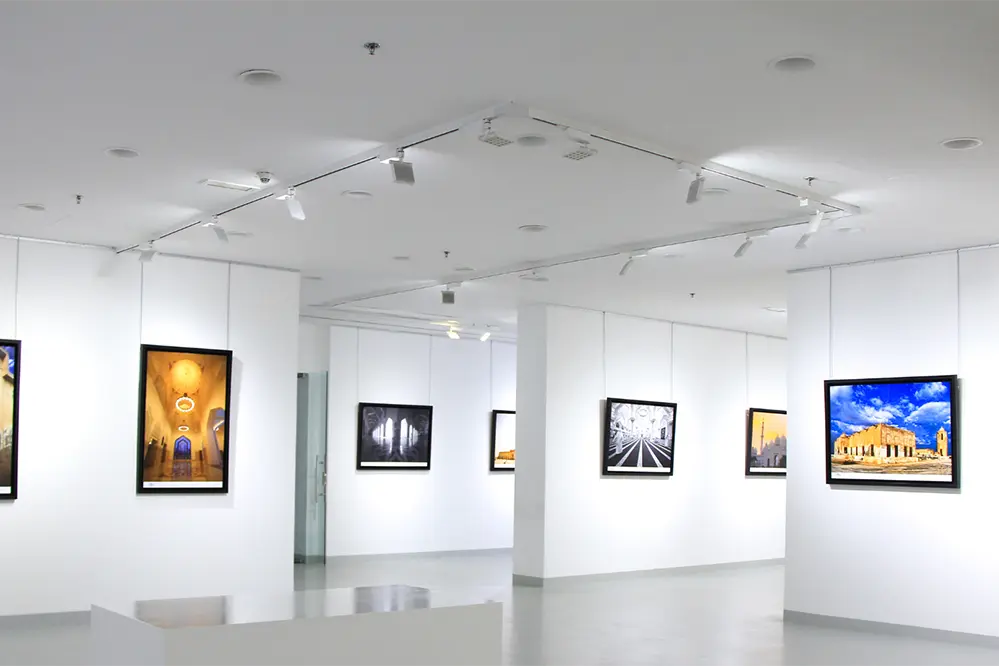
Museums and galleries, custodians of world-renowned collections, face the vital responsibility of preserving artwork while enhancing viewer experience.
Choosing appropriate lighting is crucial for preserving artistic treasures.
LED lights have emerged as frontrunners in this pursuit, offering an impressive balance of aesthetics and preservation. Their cooler temperature and lack of UV radiation render LED lights paramount for minimizing damage while accentuating artworks’ splendor.
With LEDs’ adaptability and energy efficiency, museums can maintain optimal illumination levels, ensuring that each piece is displayed to evoke the utmost admiration. This technology not only preserves precious works for future generations but also symbolizes innovation and stewardship, inspiring others to follow in the ethically enlightened footsteps of preservation through smart illumination choices.
LED Light Recommendations for Art Collectors
As an art collector, safeguarding your collection is paramount, and intelligent lighting choices play a pivotal role in this safeguarding mission. Implementing LED lighting within your collection not only protects your artwork but also enhances its aesthetic appeal, creating a captivating viewing atmosphere.
LED lights tailored specifically for artwork accentuate the vibrant blue hues and intricate details of your cherished pieces.
Selecting LEDs with high CRI (Color Rendering Index) values will ensure your collection is always presented in its truest colors, energizing both the artwork and its observer.
Consider the use of dimmable LED options, which offer versatility, enabling you to control the lighting intensity based on lighting conditions and the requirements of specific pieces within your collection.
Some LEDs also feature customizable spectral outputs to emulate natural sunlight, heightening the realism and vividness of your art. These options permit the creation of bespoke lighting environments that align with your curatorial vision, ensuring each work shines in its most flattering light.
Ultimately, the art of selecting the right LED lighting transcends mere technological choice; it reflects a commitment to preserving the legacy of human creativity. Inspired choices today empower your treasures to illuminate the path to the future.
Innovations in LED Technology
LED developments promise unprecedented protection for art.
In recent years, advancements have tackled the issue of UV radiation. The latest generation of LEDs has been engineered to emit negligible levels of ultraviolet light, ensuring that cherished artworks remain unscathed. Furthermore, many of the new models offer customization of the visible light spectrum to further safeguard delicate pieces.
Light quality with minimal UV exposure preserves artwork.
Artists and collectors can now select LEDs that balance color precision with spectral fidelity, akin to natural daylight. This ensures that every brushstroke is vividly displayed and preserved over time.
The continuous march of technology provides assurance to conservators, who can eagerly embrace these new LEDs, confident in their capability to uphold visibility while minimizing degradation. In recent years, innovations have made strides in offering energy-efficient, reliable solutions that maintain aesthetic integrity while preserving historical significance.
Future of LED Lighting in Art Conservation
Looking ahead, LED technology presents a thrilling horizon for art conservation, offering promise and protection to priceless artistry.
Firstly, as research progresses, the potential for LEDs to offer a warmer, more accurate color rendition becomes increasingly feasible, eliminating concerns of distortion that plagued former lighting solutions. This evolution ensures that the vibrancy of artworks can be appreciated without the specter of damage, enhancing both the viewer experience and the artwork’s longevity.
Moreover, LEDs are on the brink of integrating smart technology, permitting conservators to precisely calibrate illumination according to the specific needs of each piece. Such adaptive lighting systems could foster entirely new standards of preservation, deftly blending aesthetic presentation with scientific scrutiny.
Finally, embracing LEDs may soon unite art conservation with sustainable practices, reducing energy consumption while safeguarding cultural heritage. Visionary developments, like solar-powered LED systems, promise to forge an enlightened era where innovative conservation techniques harmonize with environmental stewardship, marrying aesthetic brilliance with ecological responsibility. The future of LED lighting in art conservation holds remarkable potential, forging pathways that excite both the mind and the senses with the promise of innovation.
Conclusion
LED lights are revolutionizing artwork conservation by providing customizable lighting conditions that enhance the integrity and vividness of art. While concerns about potential fading exist, the benefits of LEDs, such as minimal UV emissions, generally outweigh the risks. They represent a beacon of hope for preserving masterpieces without compromising durability.
The art community is empowered by the choices LEDs offer, improving energy efficiency and reducing the environmental footprint of art institutions. This technology deepens the connection between art and viewers while championing sustainability. By tailoring lighting to each piece, LEDs ensure that art is displayed in its best light.
As we move forward, informed by innovation, the art of preservation is set to reach new heights. The expansive horizons offered by LED technology are not just about advancements but also about vision. Embracing the LED renaissance allows us to redefine how we cherish and protect art for generations to come.
